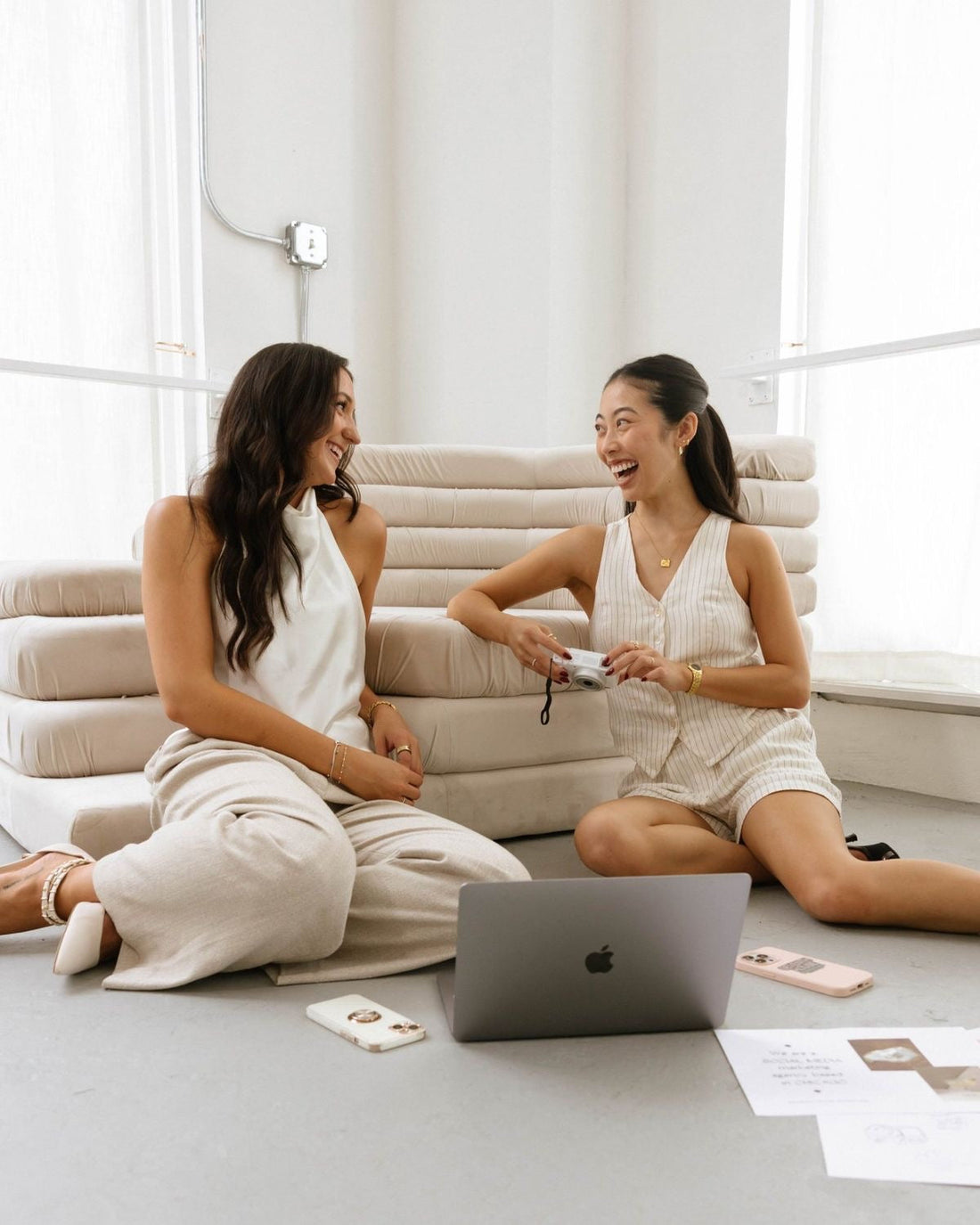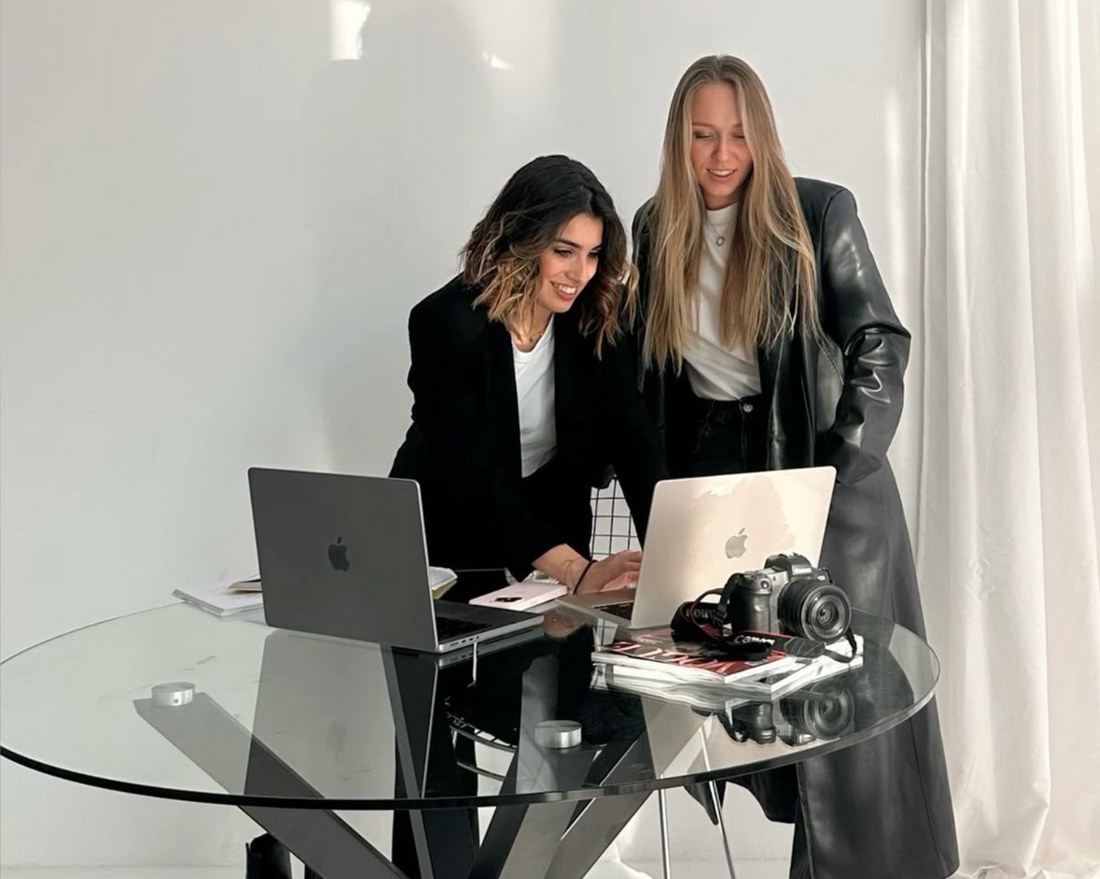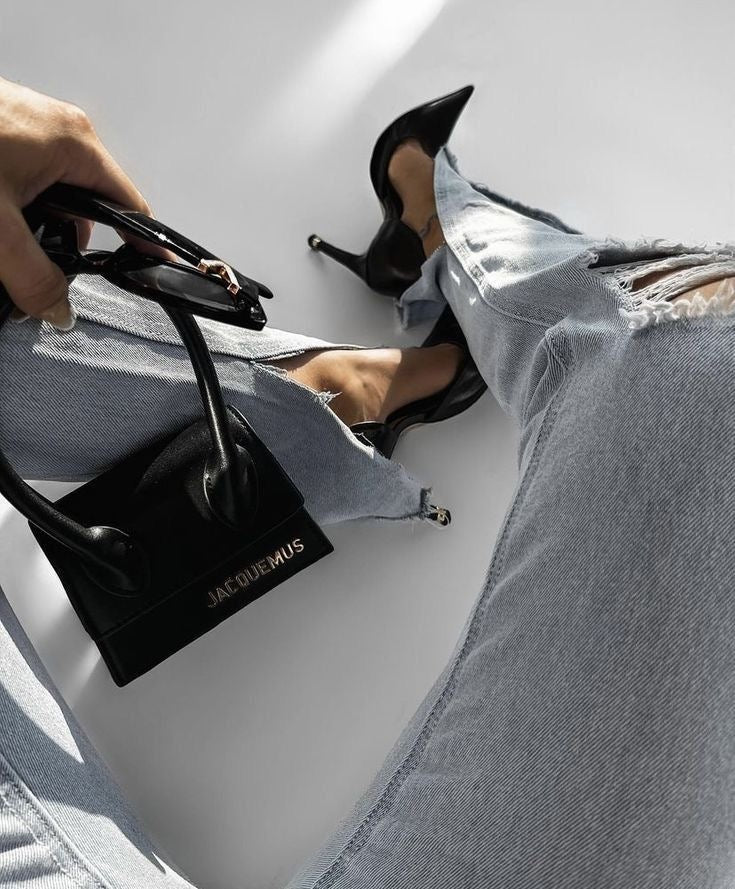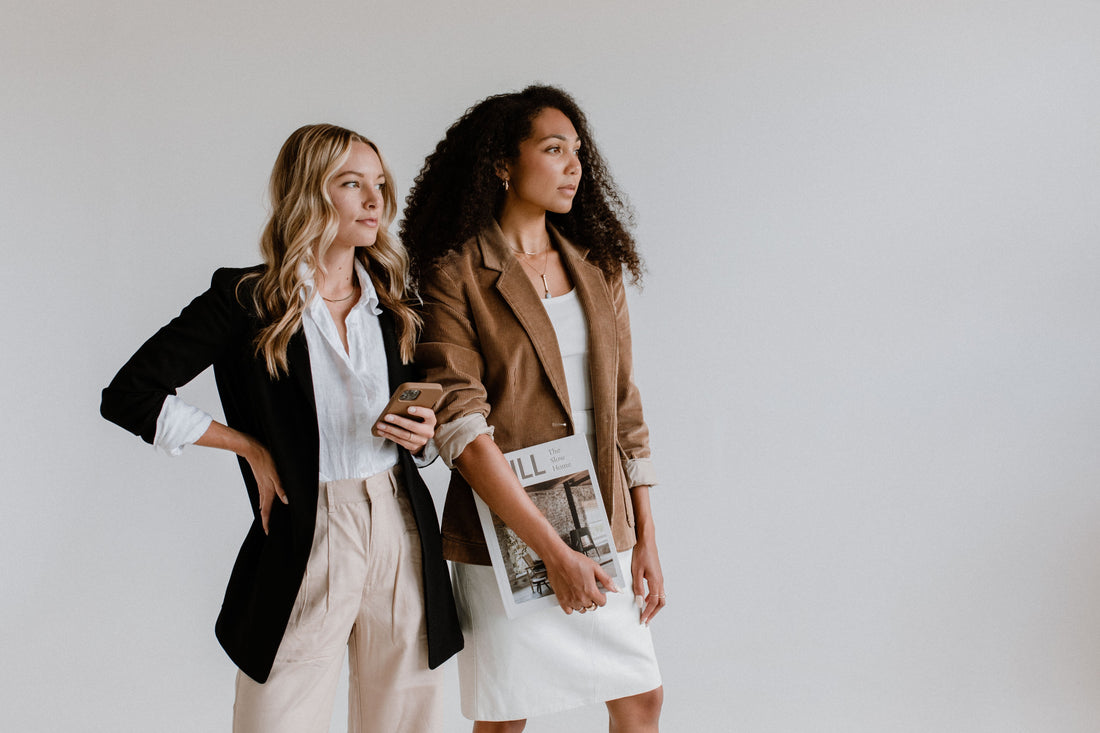The Journal
Working With Brands vs Working With PR Agencies
Landing collaborations feels like cracking a code sometimes, doesn't it? One question keeps popping up: who do you email first, the brand’s PR agency or the brand itself? Both options have their pros and cons, and knowing the ins and outs will save you time, energy, and maybe a few awkward “did they see my email?” moments. Why Email PR Agencies? The Upsides PR agencies are often the go-to for big brands. Think of them as the professional gatekeepers who manage the flow of collaboration requests. Big Brand Access: Agencies typically handle partnerships for major labels. If you’re aiming for glossy campaigns and top-tier brands, they’re usually your best route. Clear Guidelines: Agencies send detailed briefs with everything you need to know, deadlines, deliverables, style direction etc, so you’re not left guessing what the brand wants. Support with the Process: They handle contracts, payments, timelines, and sometimes even help with negotiations. This structure is great if you want a smoother, more formal setup. Dedicated Contacts: Usually, there’s a specific person or team looking after creators, so your communication won’t get lost in a general inbox. The Downsides Lots of Competition: Agencies get slammed with emails daily. Your pitch has to be sharp, personalised and relevant, generic emails won’t cut it. Less Room to Experiment: Campaigns through agencies tend to be tightly controlled. There’s often less flexibility to bring your own style or ideas. Slower Feedback: Because your pitch passes through agency and brand approvals, responses and decisions can take longer. Distance from the Brand: You don’t get to build a direct relationship with the brand, which sometimes means less influence over the project. Why Email Brands Directly? The Benefits Straight to the Decision-Maker: Especially with smaller or indie brands, emailing directly often means talking to someone who can say yes straight away. More Creative Freedom: Without agency restrictions, brands can be more open to your unique ideas and style. Faster Responses: Less bureaucracy often means quicker replies and decisions. Build Long-Term Relationships: Direct contact makes it easier to develop ongoing collaborations, rather than one-off projects. Control Your Negotiations: You handle rates, deliverables and timelines yourself, which means you’re in the driver’s seat. The Challenges Finding the Right Contact: Brands don’t always make partnership contacts easy to find (but that's what we're here for 💅) Risk of Getting Overlooked: Without a PR or partnerships team, your email might disappear into a general inbox or get missed. You Manage Everything: Without agency buffers, you’ll be responsible for negotiations, contracts, and keeping track of deliverables and payments. Vague Campaign Details: Brands might not always provide detailed briefs upfront, so you’ll need to ask questions and clarify expectations. Which Approach Fits You Best? Go to PR agencies if: You want access to big brands, prefer a structured process, and are comfortable with a slower, competitive environment. Go direct if: You want creative freedom, quicker decisions, and to build personal relationships, especially with smaller or emerging brands. How to Do Both Most successful creators and freelancers don’t choose one or the other, they juggle both. Pitch agencies for big campaigns and reach out directly to brands that match your vibe. Keep your contacts organised with notes on responses and follow-ups. Tailor each email to show you get the brand or agency, and why you’re a great fit. Do your research: Know what the brand or agency is about, recent campaigns they’ve done, and what kind of creators they like to work with. Make your intro clear: Who you are, what you do, and why you’re reaching out, all within the first couple of sentences. Highlight your value: Don’t just say you want to collaborate, explain what you bring to the table and how it fits their needs. Include links: Portfolio, Instagram, previous work etc, make it easy for them to check you out. Keep it professional but natural: Write like a real person, friendly but confident, no jargon or overly formal language. Follow up politely: If you haven’t heard back after 10-14 days, send a gentle reminder. Who you email is part of the strategy, but how you show up in that inbox, is what really counts. Keep it personal, keep it clear, and always lead with what makes you the right fit. A thoughtful, well-structured pitch can open doors, whether you're emailing a PR agency or a brand founder directly.
A Week in the Life of a Magazine Editor’s Inbox
Ever wondered what happens to your pitch after you press send? Let’s take a peek behind the curtain… If you’ve ever felt like your emails are disappearing into a black hole, you’re not alone. Fashion and beauty editors receive hundreds of emails every week and that’s on a quiet one. To help you understand why it’s not always personal when you don’t hear back, we’ve broken down what a typical week in a magazine editor’s inbox really looks like, and how to make sure your pitch doesn’t get lost in the noise. Monday: The Inbox Avalanche 8:57am: They log in to over 300 unread emails. 9:15am: They’ve already deleted half, subject lines weren’t clear, too generic, or screamed “mass email.” 10:30am: They flag a few gift guide pitches and invites to launches that align with current coverage plans. Yours? Possibly buried under a mountain of Monday madness. Timing matters. Tip: Avoid pitching first thing Monday unless it’s time-sensitive. Try Tuesday late morning for better visibility. Tuesday: Meetings, Deadlines & Forward Planning Between editorial meetings, layouts, and calls with PRs they already know, editors are juggling tight deadlines and planning for next month’s features. Only the most relevant, eye-catching emails get opened. If your pitch has a strong subject line and matches an upcoming theme (think summer skincare, Pride month, Wimbledon-worthy looks), it has a better chance of being read. Tip: Be specific. “Affordable SPF under £20 for oily skin” beats “Summer press release.” Wednesday: Events, Launches & Trying to Catch Up It’s midweek. There’s a breakfast launch in Soho, a showroom appointment in the afternoon, and a last-minute shoot edit to approve. They’ll skim their inbox on their phone between taxis, but unless your subject line is golden or your name is already familiar, you’ll probably get snoozed for later… if at all. Tip: Build relationships early. A friendly follow-up later in the week can help bring your pitch back to the top. Thursday: PR Day Thursdays are often the day editors dedicate to meeting PRs, reviewing samples, and sorting what’s going in next week’s shoots or stories. If you’ve sent a relevant, well-timed pitch with product images, stockist info, and clear pricing, this could be the moment it gets noticed. Tip: Always include high-quality images and clear details in your first email, they don’t have time to chase. Friday: Firefighting & Signing Off Friday is a rush to hit deadlines, wrap up the week, and clear the inbox before the weekend. Most non-urgent emails will go ignored. A polite follow-up here might get flagged for Monday… or buried again. Tip: If you’re following up on a Friday, keep it extremely short, helpful, and low pressure. So… how do you stand out? Your subject line is everything. Keep it short, relevant and clickable. Do your homework. Pitch the right editor, at the right title, with the right story angle. Include the important bits upfront. Think pricing, product links, high-res images, availability, and why it’s relevant right now. Keep it concise. They’re scanning, not reading essays. If you’ve ever felt ignored, remember: it’s not that your pitch was bad, it might have just hit at the wrong time, lacked a hook, or landed in a sea of other emails. Knowing how editors work helps you pitch smarter, not louder.
How to Get Celebrities to Use Your Products Authentically
Let’s be real, having a celebrity use your product is the ultimate PR win. It boosts credibility, increases brand awareness, and can lead to serious sales. But the question is: How do you get celebrities to use your products authentically, not just as a paid endorsement? A forced, transactional shoutout rarely has the same impact as an organic moment where a celebrity genuinely loves your product. So, how do you make that happen? Let’s break it down step by step. 1. Find the Right Celebrities for Your Brand Not every A-lister will be the right fit for your brand and that’s okay! The key is to target celebrities who align with your brand values and aesthetic. Look at their lifestyle: Would they realistically use your product? If your brand is all about clean beauty, target celebs known for their natural skincare routines. Check their social media: Do they frequently tag brands they love? Are they vocal about specific causes or interests that align with your brand? See what they’ve worn or used before: If they’ve already been spotted using similar products, they’re more likely to try yours. Pro tip: Don’t just go after the biggest names, rising stars, niche celebrities, and reality TV personalities can be just as (if not more) influential for certain audiences. 2. Work Through Their Stylists, Makeup Artists & Inner Circle One of the best ways to get your product into a celebrity’s hands? Go through their glam squad. Celebrities trust their stylists, makeup artists, and personal assistants to introduce them to new brands. Here’s how to do it: Find their glam team: Check Instagram tags, behind-the-scenes credits, or interviews where they mention their stylists or MUAs. Reach out to them directly: Stylists and makeup artists are more likely to accept PR gifts than celebrities themselves. Make it easy for them: Offer to send them a product to try on their celeb client, but keep it low-pressure. Example DM/email:“Hi (Name), I love your work with (Celebrity)! I think our (Product Name) would be a perfect fit for them, would love to send you some to try for your kit. Let me know if you’re interested!” Pro tip: Some glam team members share their PR contact details in their Instagram bios, so always check! 3. Send Thoughtful Celebrity Gifting (Without Being Spammy) Randomly sending products to celebrities without a strategy is a waste of time and money. If you’re going to gift, make it personal and thoughtful. How to Gift Celebrities the Right Way: Personalise it: Include a handwritten note that makes a connection (e.g., “We saw you love hydrating serums, this one’s packed with hyaluronic acid for a dewy glow!”). Keep it exclusive: Make them feel special by sending a limited-edition version or an exclusive first look at a new launch. Make it Instagrammable: The packaging should be high-quality, beautifully presented, and photo-worthy. What NOT to do: Don’t bombard them with multiple products they didn’t ask for. Don’t expect an immediate post or endorsement. Don’t follow up aggressively (One polite check-in is fine, but if they’re interested, they’ll let you know). Pro tip: Celebrities love products with their name or initials engraved, if possible, personalise your gift to make it even more special! 4. Leverage Celebrity Hotspots & Events A great way to get celebrities to use your products is to place them where they’ll naturally come across them. Here’s how: Get into celebrity gifting suites: These are events where brands showcase products for celebrities during award season, festivals, and fashion weeks. Partner with VIP hotel spas & salons: Luxury hotels, spas, and beauty bars that celebrities frequent are great places to get your products noticed. Sponsor high-end events: Getting your brand into exclusive launch parties, film festivals, or charity galas can put it in the hands of A-listers. Example: If you’re a beauty brand, getting your product stocked in the spa at The Beverly Hills Hotel or The Edition in London could lead to natural celebrity exposure. 5. Focus on Subtle, Organic Exposure The best celebrity endorsements don’t feel like endorsements at all, they feel like real moments of product love. Ways to create organic celebrity exposure: Send PR gifts before a big event: Celebrities are more likely to use your product when they need something new for an upcoming appearance. Encourage paparazzi moments: Celebrities get snapped at the airport, the gym, and coffee runs, make sure your product fits into their lifestyle. Get them using it without tagging: Some celebs don’t like to tag brands, but if they’re spotted using your product in paparazzi shots, interviews, or red carpet moments, that’s just as powerful. Pro tip: If a celebrity is photographed using your product, share it on your brand’s social media (“Spotted: [Celebrity] keeping their skin glowing with our hydrating mist!”). 6. Don’t Underestimate the Power of Micro-Celebrities & Influencers Major A-listers might be a challenge to reach, but reality stars, TikTok creators, and rising actors can be just as impactful, if not more. Why? They’re more likely to engage with brands. Their followers feel a stronger connection to them. They can be just as influential in niche markets (beauty, fashion, wellness, etc.). Example: A skincare brand that gifts Love Island contestants or Netflix reality stars might see more engagement than sending products to a big Hollywood celeb. Pro tip: Check who’s trending on reality TV, fashion week circuits, and TikTok’s beauty community, they could be your next big brand ambassador. 7. Play the Long Game (And Be Patient!) Celebrity placements rarely happen overnight. Sometimes a celeb will receive a product and start using it months later. The key is to be patient and keep your brand on their radar. Continue engaging on social media: If a celeb posts about your industry (skincare tips, wellness routines, etc.), comment or interact genuinely. Keep gifting strategic: Only send follow-up gifts if there’s a new product launch or a reason to reconnect. Leverage relationships: If a stylist or influencer has already loved your product, nurture that connection, they might introduce it to more high-profile people. Pro tip: Even if a celebrity doesn’t post about your product, them simply using it can be valuable. If they fall in love with it, they might talk about it later when the moment feels natural. Getting celebrities to use your product authentically is all about strategic placement, thoughtful gifting, and relationship-building. Instead of chasing random A-listers, focus on creating moments where your product naturally fits into their world. It might take time, but when done right, an authentic celebrity placement can be game-changing for your brand.
How to Capitalise on Press and Influencer Coverage
So, you’ve landed some amazing press or influencer coverage, congrats! Your brand has been featured, the buzz is building, and now you’re wondering… what next? Many brands make the mistake of assuming the work is done once they’ve secured coverage. But in reality, this is just the beginning! To truly maximise the impact of that hard-earned media placement, you need to squeeze every drop of value out of it. In this guide, we’ll walk you through exactly how to capitalise on press and influencer coverage to boost brand awareness, drive sales, and build lasting credibility. 1. Share It Everywhere First things first: don’t let your coverage go unnoticed! You need to shout about it from the digital rooftops. Post it on social media: Share the article, video, or post across all your platforms. Add an engaging caption, tag the journalist/influencer, and use relevant hashtags. Use Instagram Stories:Take screenshots and share them in a carousel format. Use fun stickers, GIFs, and polls to make it interactive. Pin it to the top of your profiles: On Instagram, TikTok, and X (formerly Twitter), pin the coverage post so it stays visible for new visitors. Feature it in your email newsletter: Your subscribers are already interested in your brand, show them the great things people are saying about you! Update your website: Add a “Featured In” or “Press” section with the logos of publications and influencers who have covered you. This builds credibility for new customers. 2. Turn It Into a Testimonial Press and influencer endorsements act as powerful third-party validation. Instead of just sharing the article and moving on, use it as an ongoing trust signal. Pull out key quotes: If a journalist or influencer said something great about your product, turn it into a graphic or video for social media. Incorporate it into product pages: Add a “As Seen In” badge or testimonial section to reinforce credibility. Use it in paid ads: Highlight media coverage in your Facebook, Instagram, or Google ads to strengthen social proof and drive conversions. 3. Engage with the Journalist or Influencer Building relationships is key in PR. If someone has featured you, nurture that connection to increase your chances of future coverage. Send a thank-you message: A simple DM or email expressing appreciation can go a long way. Engage with their content: Like, comment, and share their posts to stay on their radar. Offer them exclusives: Next time you launch a product or have an exciting update, pitch it to them first. Collaborate further: If it was an influencer feature, consider working together on a deeper level, such as a paid campaign, giveaway, or ambassador program. 4. Repurpose the Content for Maximum Impact One piece of coverage can be repackaged into multiple formats to extend its lifespan. Here’s how: Create a blog post: Summarise the coverage in a blog on your website, adding your own insights or behind-the-scenes details. Film a reaction video: Share your excitement on Instagram Reels or TikTok, reacting to the coverage and adding your thoughts. Turn it into an infographic: Visual content is highly shareable! Summarise key points in an eye-catching design. Make it a case study: If the coverage drove significant traffic or sales, document the results as a case study to show potential stockists or investors. 5. Keep the Momentum Going One feature is great, but consistency is key in PR. Use this coverage as a stepping stone to secure more. Leverage credibility: When reaching out to new journalists or influencers, mention your previous press features to show that your brand is newsworthy. Create a media kit: Include your latest press, key brand info, and high-quality images to make it easy for future press to cover you. Monitor performance: Use Google Analytics or social media insights to see how the coverage impacts traffic and sales. Pitch follow-up stories: If an article performed well, reach out to the journalist with a fresh angle or update to continue the story. Press and influencer coverage is more than just a momentary win, it’s an opportunity to build long-term brand authority, attract new customers, and open doors to bigger opportunities. By following these steps, you’ll ensure your features don’t just sit there collecting digital dust but actually work for your brand. So, next time you land a piece of coverage, don’t just celebrate, strategise!





